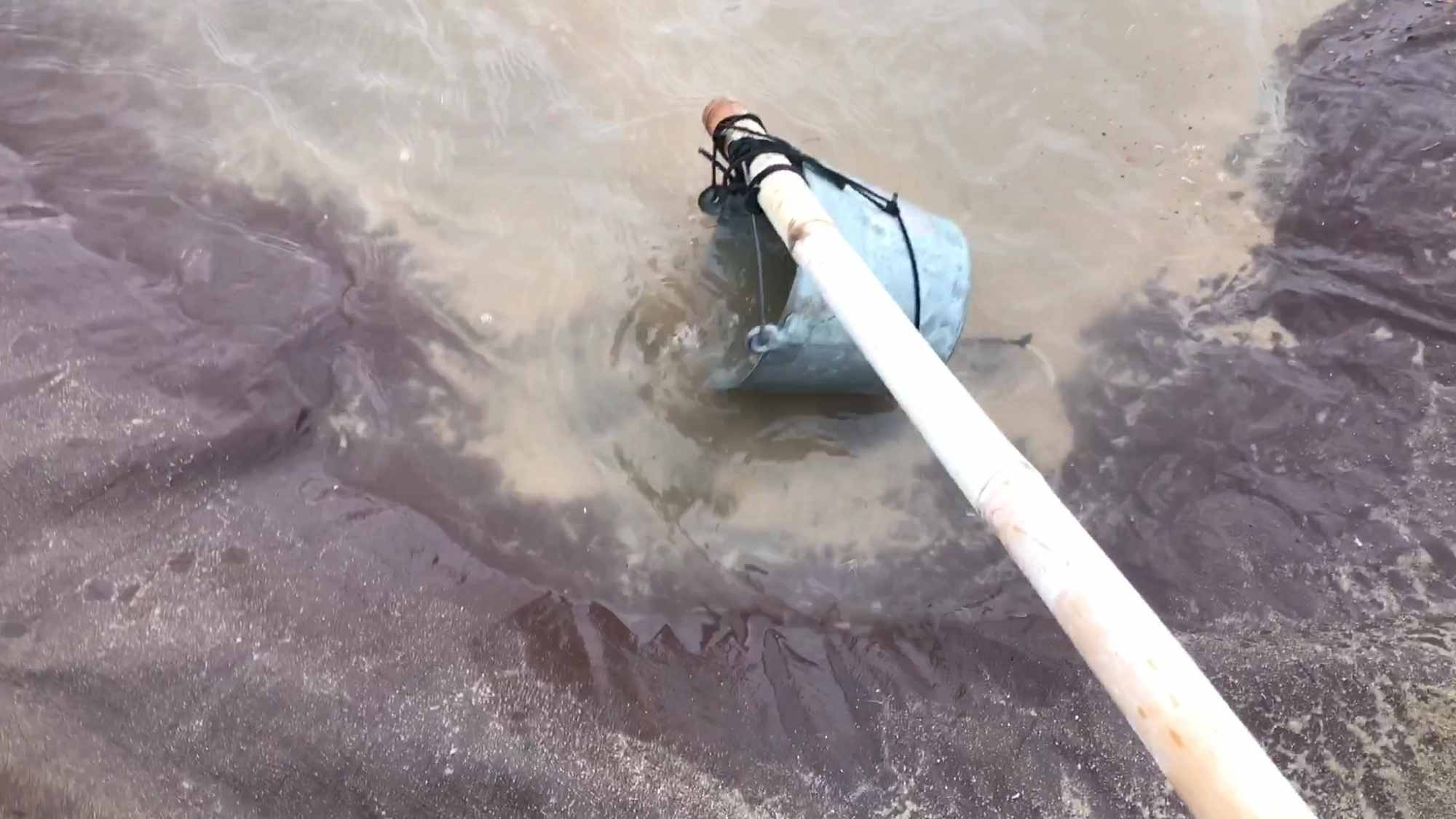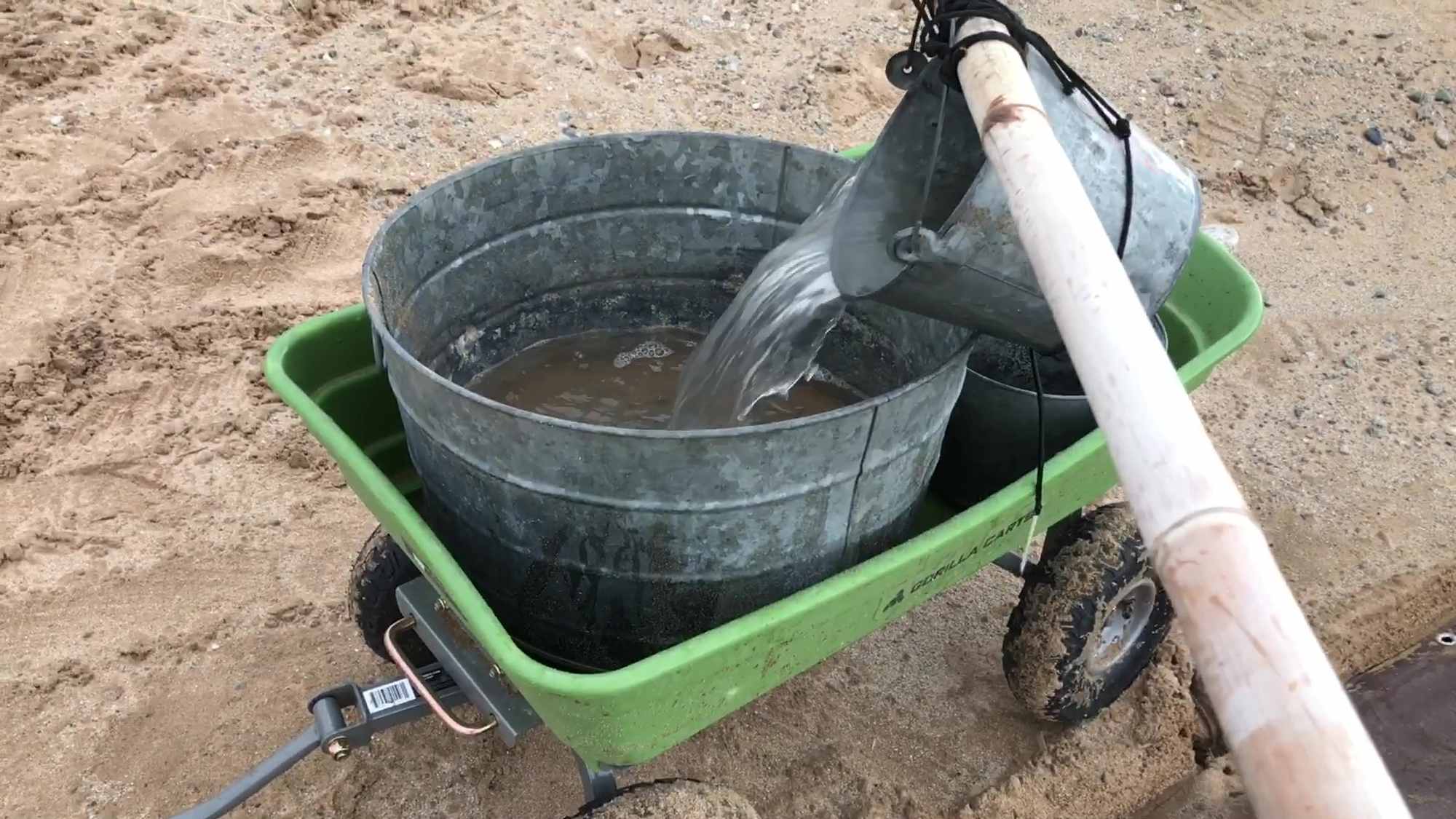
01 Approaching Rain Water Catchment Pond Tarp Against The Wind After A Night of Rain

02 Attached Galvanized Pail With Paracord To Bamboo Pole To Prevent Leg Injuries And Remain Upright

03 Twisting Pole To Get A Pail Full of Rain Water

04 Carefully Lifting Rain Water Filled Pail

05 Pouring Rain Water Filled Pail Into Metal Basin In Cart For Transport To Filtration And Storage Tanks
Bamboo Pole Pail For Harvesting Rain Water From Catchment Pond Tarps
Whereas I had great luck with using a drill pump to harvest captured rain water previously, there was an energy efficiency problem with the rate at which the drill pump consumed the charge of the hand drills batteries. Luckily right before I made the purchase to buy several more batteries, it rained again, I used up all the batteries and there was still a lot of water left, so I had to think on my feet. My main design consideration was that, however I rescue the rest of the water, now without a mechanical pump, I have to remain upright, I can't bend the knees and crouch down to scoop out the water by hand. Not that I can't physically do it, or do it a few times, but the repetition over and over is what blew out blood vessels in both legs the previous summer and left me unable to stand or walk for two months. This time it had to be different. While I was laying in my shelter, listening the rain fall and fill up my catchment ponds, the design came to me: use paracord to attach a long bamboo pole to a metal pail, this way, I could stand up straight, use the length of the pole to dip the pail into the water, then carefully pivot it up slope and into the metal collection basin in my new wheeled cart.
Once the rain let up again, I jumped out and hurried to put this prototype together. Within minutes I had a working proof of concept and was able to collect and transport water more efficiently than by any previous means. This was a significant life, water, and money saving breakthrough, and it was totally free, low tech, and green. It saved me buying more batteries and being more reliant on technologies that are beyond my means to maintain, repair, and replace. It made it possible for me to do the rain harvesting by hand without risking serious injury so long as I'm mindful about proper body mechanics while lifting and twisting the water filled pail. But I quickly discovered even if I'm extra cautious and only fill the pail partially, the efficiency gains of the use of the pole and the momentum of moving back and forth to transfer the water made it possible to rescue gallon after gallon with minimal effort, and at a fast though safe pace.
It was just one of those moments where you realized, the most elegant and sustainable solution was something that would have been an intuitive no-brainer to our primal ancestors. It was also quite proverbial that what seemed like a problem became not only a solution, but THE solution, and the best solution at that. Looking back on my options, the drill pump was a great intermediary step and I'll always have one as a back up if I'm too weak or ill to use the pole and the pail. But the perfect balance of human and tool power was to be found in the less complicated design, the one with the least moving parts, the least toxic parts, the most replaceable and adaptable parts. It's discoveries like that that make me appreciate financial limitations, they force you to do your best designs. It's actually a gift not to be able to buy yourself out of very problem you encounter. It's a richer way to live if you ask me.